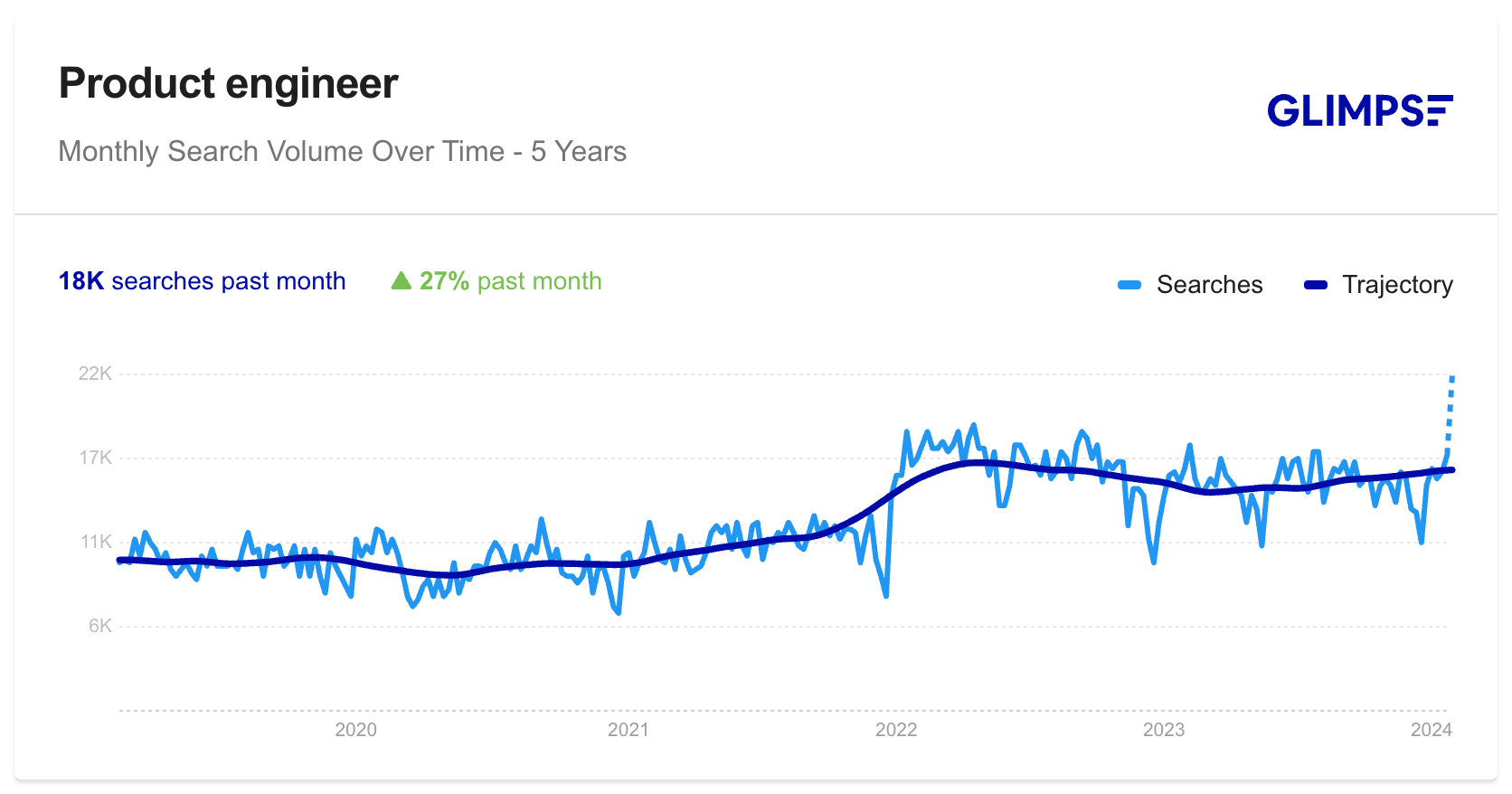Product engineer vs product manager: What's the difference?
Jan 24, 2023

On this page
- How do product engineers and product managers build a product?
- Stage 1: Beginning the product development journey
- Stage 2: Building the product
- Step 3: Launching and beyond
- What does the rise of product engineers mean to product managers?
- How can product engineers and managers work together?
- Further reading
Are product engineers a better choice for your startup than product managers are, or do you need both? To answer that, this post compares the approaches they take to product development, like we recently did with product engineers and software engineers, if you're interested.
The ELI5 here is product engineers are a hybrid of software engineer and product manager. They have the same goals as product managers, but they ship code and approach problems in a more direct, iterative way, like software engineers. To help you understand both roles, we:
- Compare how both work to build a product
- Explain how the rise of product engineers impacts product managers
- Explore how they can work together
How do product engineers and product managers build a product?
Developing a product is a journey. The goal of the journey is to launch a successful product or feature that solves user problems. Both product engineers and managers share this goal. What is different is the path they take, which we walk through here.
Stage 1: Beginning the product development journey
Both product engineers and managers are responsible for the start of the journey, figuring out what to work on. This means talking to users, analyzing usage data, understanding the competitive landscape, and using all this knowledge to prioritize work. Both translate user needs into product requirements.
Product managers go into further depth here, often writing up reports and recommendations on their findings. This requires stronger analysis and research skills. Product engineers write issues and todos then move onto building as fast as possible. This makes product engineers ideal for early-stage startups, where shipping quickly and iterating is preferable to drawn out discovery work.
Stage 2: Building the product
This is where product engineers and managers begin to diverge. Product engineers dive quickly into building. They get their hands dirty writing code. They prototype and experiment. They ship previews, MVPs, and betas of features to get hands-on, direct feedback.
Product managers take more time before handing off work to engineers. They do further research into the business case for a product and understand where it aligns in the competitive landscape. They also spend time gaining depth into what the needs of users are and understanding their business and technology stack.
They use all this information to craft plans, requirements, and specs that solve the identified user needs. Product managers must translate this into something the whole team can understand. Product engineers face a similar task but have a smaller group to communicate with. Both roles require communication skills, but product managers place a higher emphasis on them.
Once product managers complete their analysis and plans, they manage a team of "stakeholders" to get a product shipped. This can include design, marketing, ops, engineering, and more. They work with all of these teams to get the feature developed and launched. This ensures alignment across teams and lowers the risk of potential issues.
Sidenote: If you hear the word "stakeholders," you are likely talking to a product manager. They deal with many, internally and externally.
Product engineers, on the other hand, ship on their own. They figure out requirements, designs, infrastructure needs, and implementation details. They rely on their broad set of technical skills for this. They may need help in design, DevOps, or infrastructure, but mostly act like a pack of wolves in search of product-market fit.

Subscribe to our newsletter
Product for Engineers
Helping engineers and founders flex their product muscles
We'll share your email with Substack
Step 3: Launching and beyond
Launching a product is a big deal for product managers. They again work with their stakeholders to make sure it goes smoothly. Product engineers are shipping so often that a single launch doesn’t matter as much to them. They continuously deploy and use feature flags to ensure their launches go smoothly. Product managers are hands-on with launches, while product engineers automate them as much as possible.
Both roles are responsible for their product after launch. This means listening to feedback and monitoring analytics. Product engineers ship bug fixes and tweaks, while product managers begin their development cycle again.
What does the rise of product engineers mean to product managers?
Searches for product engineers have grown 80% in the last 12 month, so what does this mean for product managers?

Product engineers are taking on many of the responsibilities product managers once had, especially at early-stage companies. By making product decisions and shipping code, product engineers can better help companies find product-market fit. This often requires rapid experimentation rather than research and planning.
But this doesn't mean product managers are going extinct – companies still value the depth product managers offer. Their value is in managing a complex information, business, and stakeholder environment. This information can become too much for engineers to manage in large organizations. The stakeholder environment is also taxing for engineers to deal with, disconnecting them from what they are good at: writing and shipping code.
With the rise of product engineers, product managers will specialize more in the later stages when companies enter a more complex environment. They are better able to see the "bigger picture," deal with bureaucracy, and dive deep into analysis details. These are all critical for the success of large companies, but don’t matter as much in the early stages.
How can product engineers and managers work together?
As product engineers become more prominent, it is increasingly important for them to work together with product managers effectively.
At PostHog, we have both product engineers and product managers. Our company is engineering-led and engineers own features. Product managers "ensure these owners have the company, industry, and customer context they need to make great decisions, whilst also challenging them to move faster and think bigger." They empower engineers with their ability to go deeper into analysis and research.
Doing this relies on clear ownership and responsibility. Many traditional organizations, with product managers owning the product and leading development, may find it difficult to transition to an engineering-first culture. This is a massive advantage and opportunity for companies with product engineers (like PostHog, Y Combinator, Scale AI, Ashby, incident.io, and more).
The future of building great products contains both product engineers and product managers. Companies that can get the most out of both of these roles will build the best products and be successful.
Further reading
- What is a product engineer (and why they matter)
- Startups, stop treating engineers like a different species
- Product engineer vs software engineer: what's the difference?

Subscribe to our newsletter
Product for Engineers
Helping engineers and founders flex their product muscles
We'll share your email with Substack
